Key Takeaways
- Rhino beetles are harmless and play a beneficial role in gardens.
- They are easily recognized by their horns, shiny exoskeletons, and sturdy bodies.
- Natural control methods like reducing lights and compost help manage their presence.
- Professional pest control may be needed for large or persistent infestations.
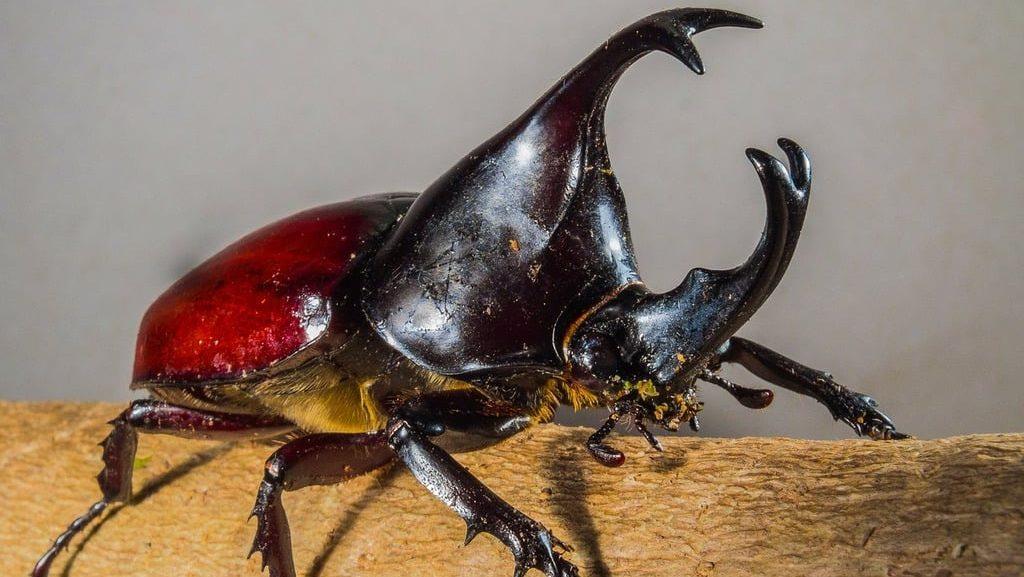 Rhino beetles are among the largest and most fascinating beetles in the world, known for their distinctive features and impressive size. With strong, horn-like protrusions and a robust body, these beetles capture attention wherever they are found. So, let’s simplify identifying these fascinating insects and explore what makes them unique and beneficial for your backyard.
In this article, we will explore what rhinoceros beetles look like, where you can find them, how strong they are, and some interesting facts about their diet and physical capabilities.
Visit our Species, Beetle Control, and DIY Guide sections for additional resources on beetles and ways to tackle a beetle infestation. Book your Free Pest Inspection Visit Today from our company.
Rhino beetles are among the largest and most fascinating beetles in the world, known for their distinctive features and impressive size. With strong, horn-like protrusions and a robust body, these beetles capture attention wherever they are found. So, let’s simplify identifying these fascinating insects and explore what makes them unique and beneficial for your backyard.
In this article, we will explore what rhinoceros beetles look like, where you can find them, how strong they are, and some interesting facts about their diet and physical capabilities.
Visit our Species, Beetle Control, and DIY Guide sections for additional resources on beetles and ways to tackle a beetle infestation. Book your Free Pest Inspection Visit Today from our company.


Not getting a solution?
Get your free pest control estimate today!What Is a Rhino Beetle?
Rhino beetles, scientifically known as Dynastes hercules, belong to the members of the Scarab beetle (Scarabaeidae) family, which also includes dung beetles and other large beetles. They are recognized as one of the largest beetle species in the world and are hard to miss for notable for their sturdy bodies and striking horns. Rhino beetles are common in tropical and subtropical regions, including Africa, Asia, and Central America. More than 300 species exist globally, and several species are often spotted across the warmer Southern and Eastern states in the U.S. They break down organic matter.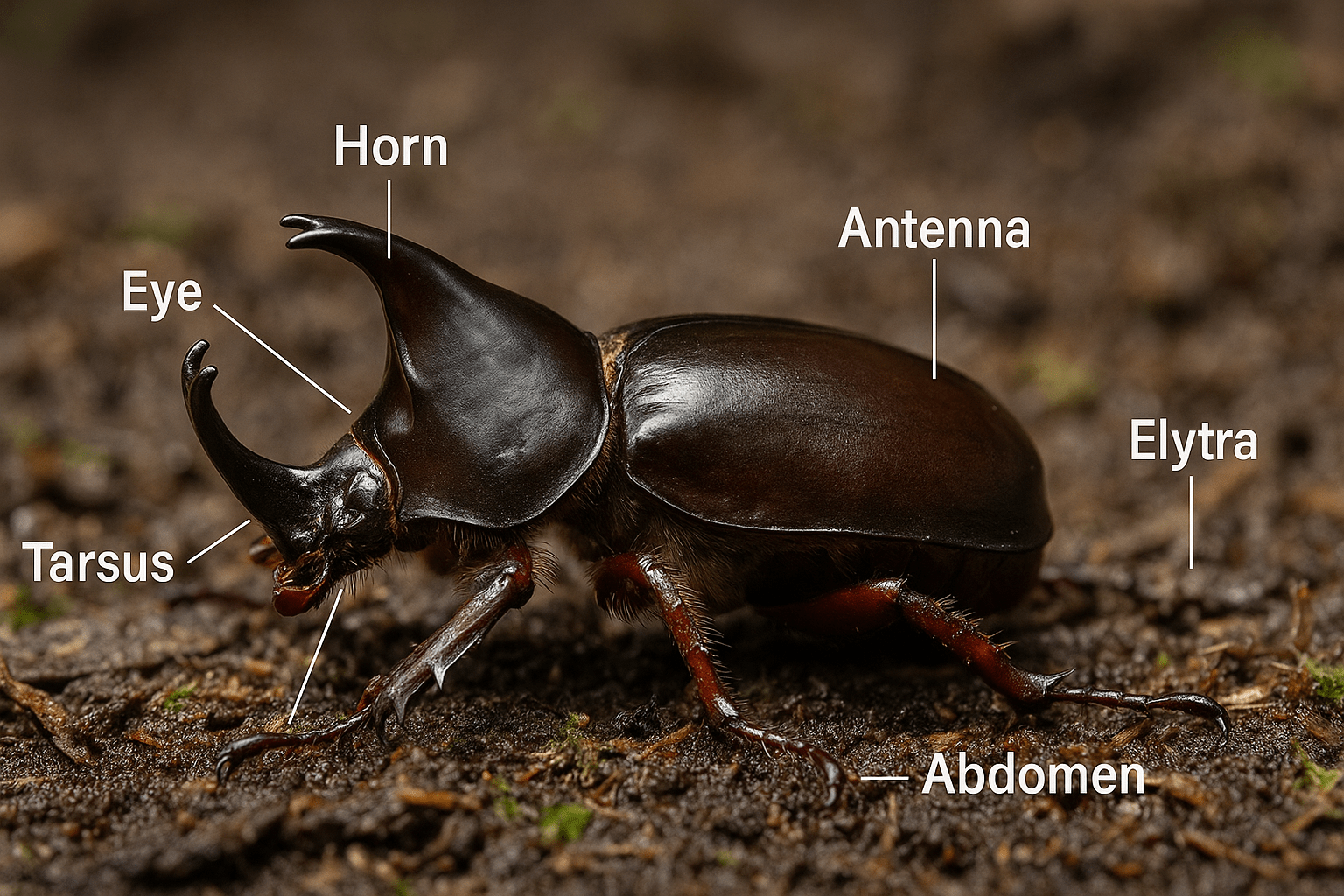
What Does a Rhino Beetle Look Like?
Rhino beetles are fascinating insects known for their impressive size and distinctive horned appearance. These beetles are part of the scarab beetle family and are admired for their strength and unique features.Physical Characteristics of Rhino Beetles
-
Size: Typically, Rhino Beetles in the U.S. measure about 1 to 2 inches-similar to the size of your thumb or a cork from your favorite wine bottle. Other beetles can be 2 to 4 inches (5 to 10 cm) long, with males generally larger than females. In tropical areas, though, beetles like the Hercules beetle can reach impressive lengths of up to 6 inches.
-
Exterior: Their bodies are glossy and features mix shades of black, dark brown, or dark gray. Under the right lighting, they can even reveal a subtle metallic or greenish sheen.
-
Horn: Males have a large, curved horn that are about one-third their body length, making them unmistakable. resembling a rhinoceros horn, used for combat during mating season. Females, however, lack horns, causing initial confusion.
-
Shape: Their oval-shaped, tough bodies almost resemble tiny armored tanks, ideal for burrowing and digging through the soil. It is robust and their hard exoskeleton in black or dark brown.
-
Antennae: Long, feathery antennae for detecting scents and navigating their surroundings.
-
Legs: Equipped with Strong, spiny legs these beetles are built for moving through soil and mulch efficiently.
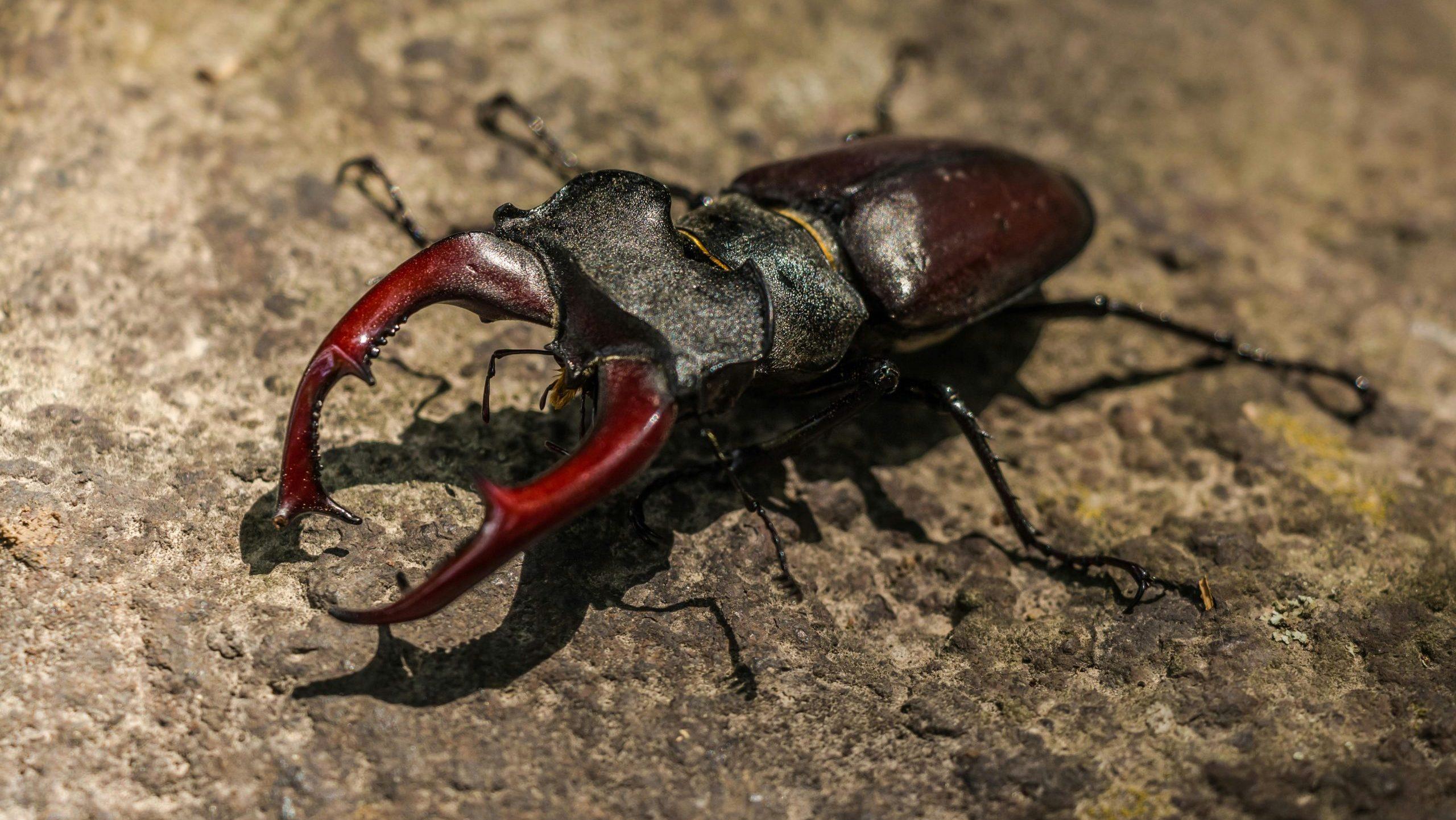
Differences Between Male and Female Rhino Beetles
Male and female rhino beetles differ notably in their appearance. The most distinctive feature is the horn, present primarily in males. Male rhino beetles have remarkable, curved horns on their heads, used mostly for battling rivals during mating season. On the other side, female rhino beetles either have much smaller horns or lack them entirely, showcasing a smoother and less aggressive profile. Additionally, male beetles tend to be larger with bulkier bodies, while females are comparatively smaller with a rounded, streamlined shape.How Much Does a Rhino Beetle Weigh?
Rhino beetles are surprisingly heavy for their size, with adult beetles weighing approximately 1 ounce (30 grams). Their strength is even more remarkable as rhino beetles have the ability to lift up to 850 times their body weight.Interesting Facts About Rhino Beetles
-
Strongest Animal: Relative to size, rhino beetles are the strongest animals in the world, capable of carrying up to 850 times their body weight.
-
Herbivores: These beetles feed on decomposing wood, tree sap, and fruits, contributing to the decomposition of organic matter in ecosystems.
-
Lifespan: Rhino beetles typically live for 1 to 2 years, spending most of their life in the larval stage.
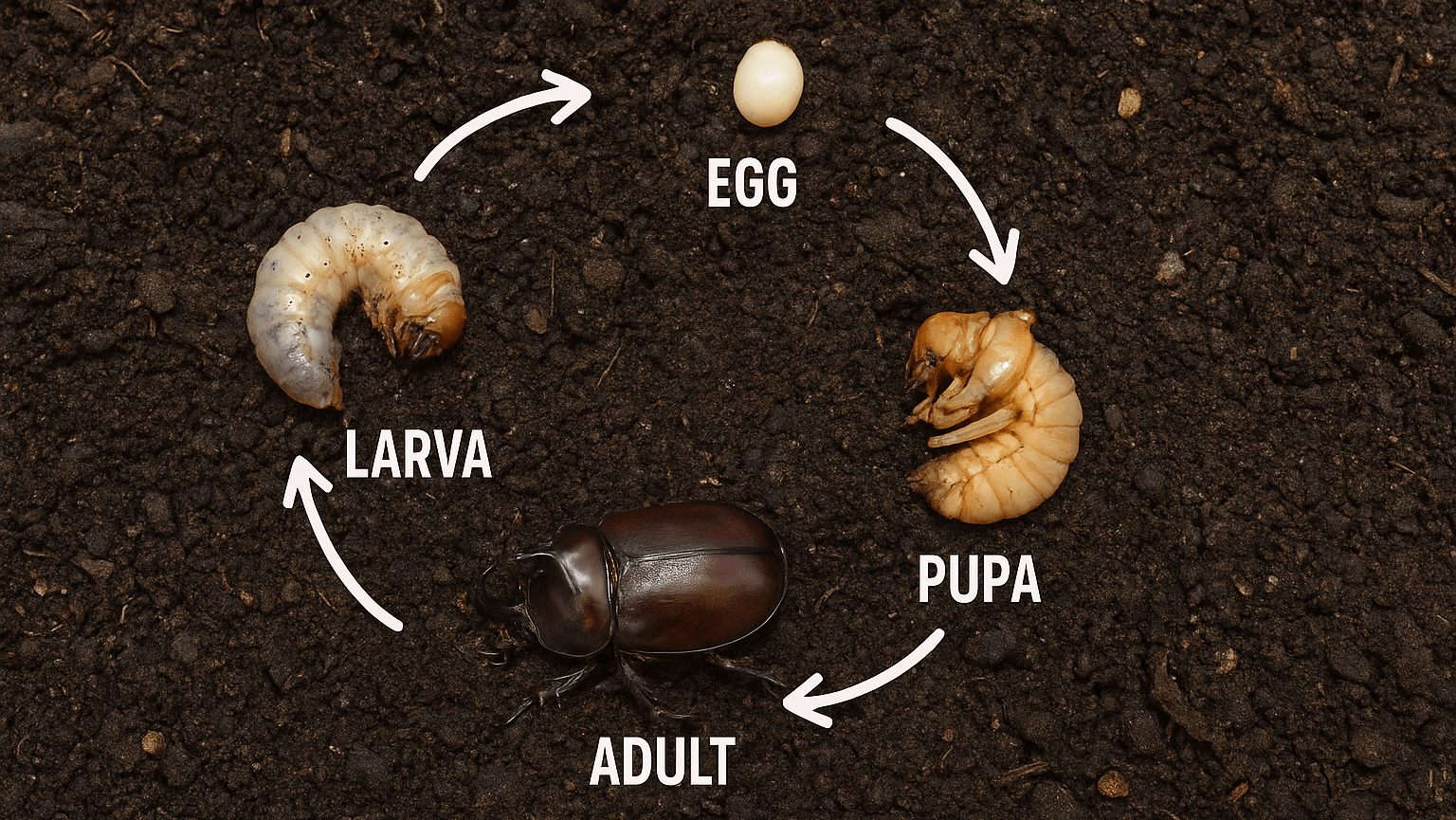
Understanding the Rhino Beetle Life Cycle
- Knowing their life cycle can help you detect their presence early on:
-
The Grub Stage: Rhino beetles begin life as white, C-shaped grubs, found beneath compost piles or rotting logs. They feed for months, helping decompose organic matter in gardens.
-
Adult Beetle Stage: Grubs develop into adults during warmer seasons, typically from late spring to early fall. Adult beetles live only a few months and focus mainly on mating and reproduction.
-
Nighttime Activity: Adult rhino beetles are nocturnal, often flying clumsily around porch lights. By day, they hide under leaves, logs, or rocks to avoid detection.
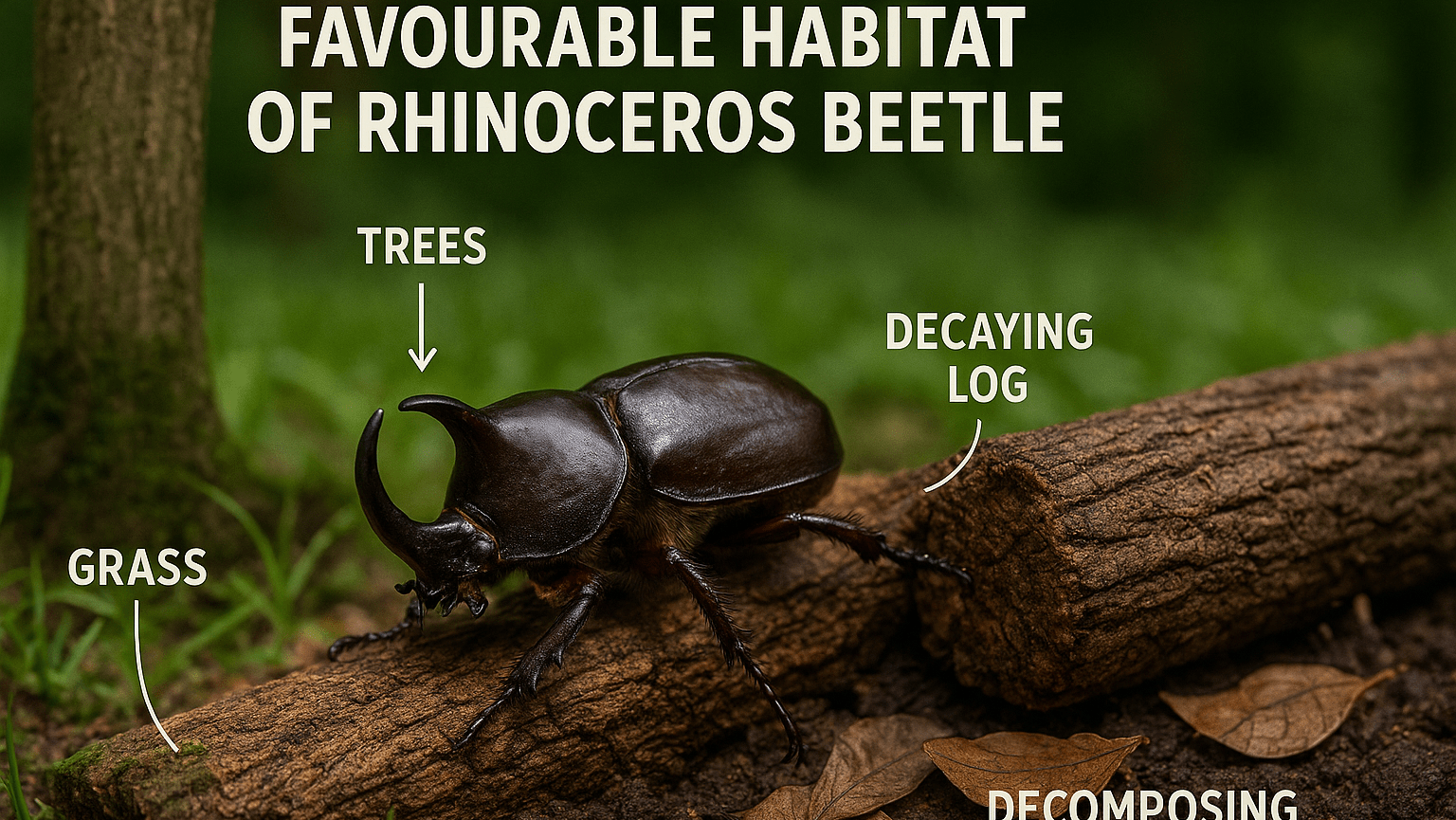
Favorite Habitats of RhinoCeros Beetles
Rhino beetles thrive in areas rich with decomposing organic materials. In the U.S., they’re commonly found in warmer climates such as Florida, Texas, Arizona, Georgia, and the Carolinas. They love gardens, wooded areas, compost heaps, and mulched landscapes. Occasionally, they might wander indoors unintentionally through open doors, windows, or damaged screens.Commonly Confused Beetles
- Rhino beetles can easily be mistaken for other large beetles due to their robust size and impressive horns. Commonly confused species include:
-
Hercules Beetle (Dynastes hercules): Larger than rhino beetles, featuring very long horns and distinct wing patterns that set them apart.
-
Stag Beetle (Lucanidae family): Easily identified by their large mandible-like jaws rather than a central horn, giving them a different silhouette.
-
Elephant Beetle (Megasoma elephas): Similar in size but with shorter horns and a more rounded body shape compared to the more angular rhino beetle.
How to Tell Rhino Beetles Apart from Similar Species
To accurately identify rhinoceros beetles, focus on their unique single or bifurcated horn structure protruding from the head region. Unlike stag beetles that have prominent mandibles, rhino beetles have horns used primarily for combat, not feeding. Additionally, rhino beetles are dark brown or black, whereas other similar beetles may exhibit brighter colors or patterned wing covers.Identifying a Rhino Beetle
-
Observe the Horn: Look for a single, prominent horn on the head, especially in males—this is a key distinguishing feature.
-
Check Size and Shape: Rhino beetles typically measure 1 to 3 inches long and have a bulky, oval-shaped body.
-
Color and Texture: They are usually glossy dark brown or black, with a smooth, hardened exoskeleton.
-
Wing Covers: Their elytra (wing covers) are smooth and rounded, protecting the delicate wings underneath.
-
Leg Structure: Equipped with strong legs that help them dig, grip surfaces, and defend themselves when necessary.
Common Misconceptions about Appearance
-
Rhino beetles are dangerous due to their horns: The horns are used for mating battles and posturing among males—they are not used for defense and pose no threat to humans.
-
Rhino beetles bite or sting: Rhino beetles are completely harmless—they do not have stingers or biting mouthparts that pose a risk to people.
-
All rhino beetles have horns: Only male rhino beetles usually have large horns; females often have smaller or no visible horns at all.
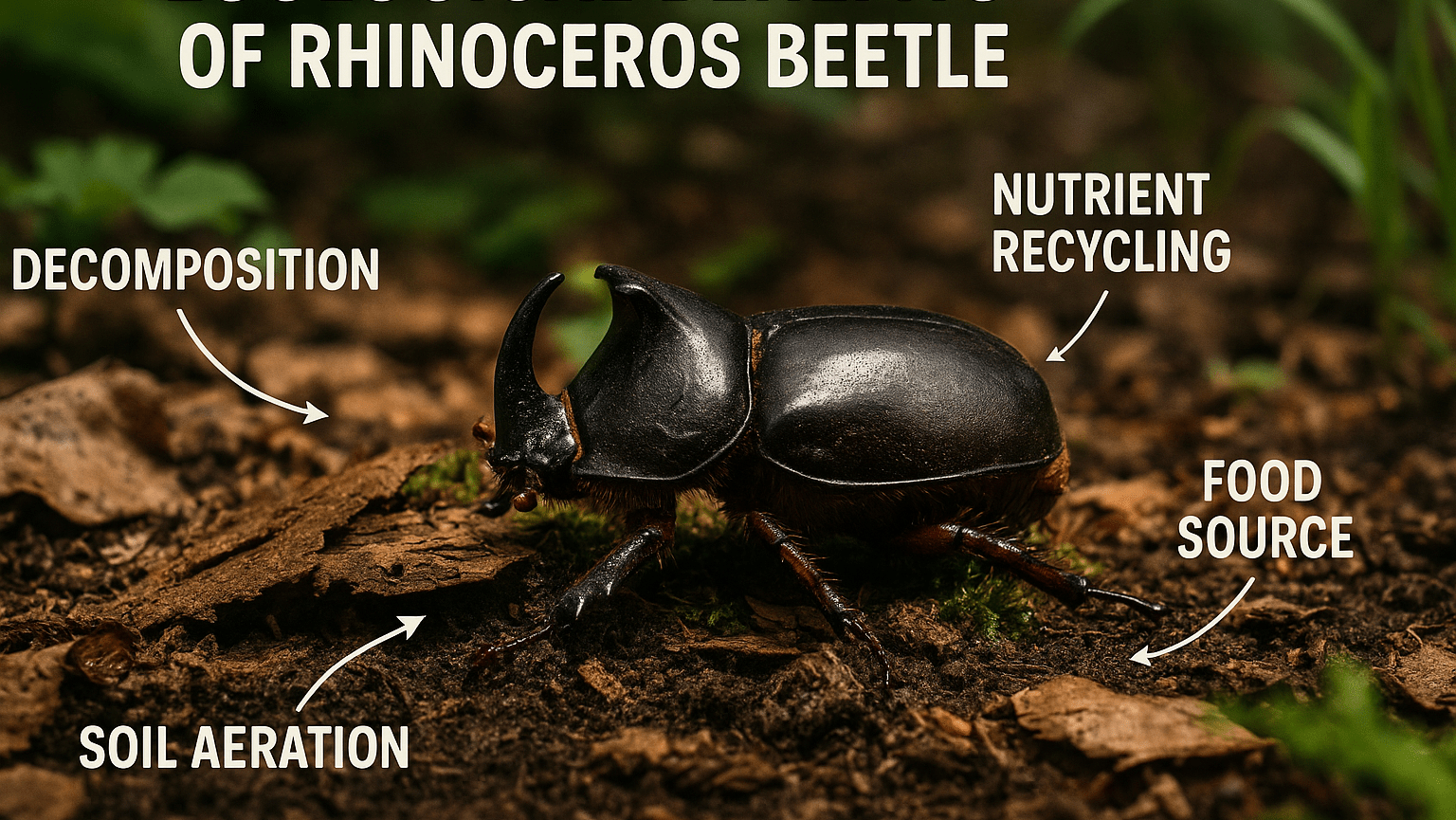
Importance and Ecological Role
Why Their Unique Appearance Matters The unique appearance of rhino beetles isn’t for visual appeal; it serves vital ecological functions. Their amazing horns are essential for reproductive competition, that ensures only the strongest and healthiest beetles pass on their genes, thus maintaining genetic diversity and vitality in populations.Role in the Ecosystem
- Rhino beetles play important roles in their ecosystems, including:
-
Decomposition: Rhino beetle larvae consume decaying plant material, helping break it down and recycle nutrients back into the soil.
-
Soil Aeration: Their digging behavior loosens soil, enhancing aeration and promoting healthy root development in plants.
-
Food Source: Both larvae and adult rhino beetles are a vital food source for birds, mammals, and other insectivores, supporting biodiversity and ecosystem balance.
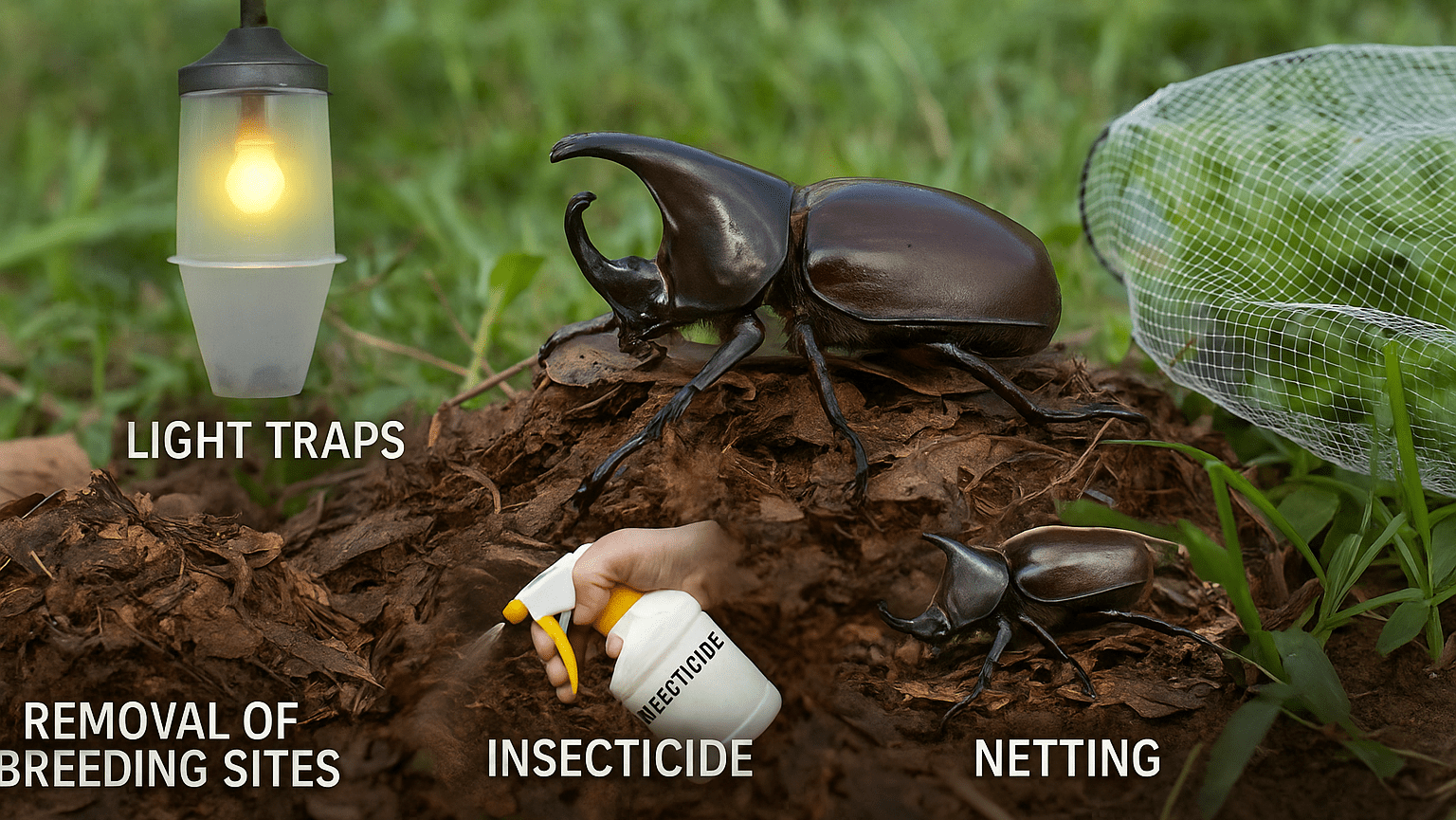
How to Get Rid of Rhino Beetles?
- Although rhino beetles are harmless, they may become a nuisance in gardens or homes. Here’s how to manage them:
-
Control Outdoor Lighting: Switch to yellow bug lights or reduce nighttime lighting to decrease beetle attraction.
-
Cover Compost Bins: Keep compost and fruit waste bins sealed to deter rhino beetles from feeding and breeding nearby.
-
Remove Decaying Wood: Clear your yard of fallen branches, mulch, rotting logs, and other organic debris that attract beetles.
-
Use Natural Pest Control: Apply neem oil or insecticidal soap as a gentle, eco-friendly method to reduce beetle numbers while protecting beneficial insects.
-
Seal Entry Points: Inspect and seal gaps or cracks in walls, windows, and doors to prevent beetles from entering your home.
Fun and Surprising Facts About Rhino Beetles
-
Amazing Strength: Rhino beetles can lift up to 850 times their own body weight—comparable to a human lifting several cars!
-
Friendly Battles: Male beetles engage in non-lethal horn battles to win mates, showcasing strength without causing harm.
-
Popular Pets: In countries like Japan, rhino beetles are kept as pets due to their docile behavior and impressive appearance.





